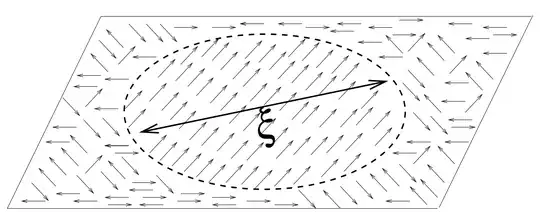I want to ask about the behavior near critical point. Let me take an example of ferromagnet. At $T < T_c$, all spins are aligned to the same direction thus it is in the ordered state, scale invariant, its correlation length is effectively infinite. At $T > T_c$, all spins are aligned randomly so it is disordered state. However, in my understanding, we say the system is scale invariant and its correlation length diverges only at critical point.
What is wrong in my understanding? Furthermore, could you explain an intuitive region why at critical point, the correlation length should diverge?
